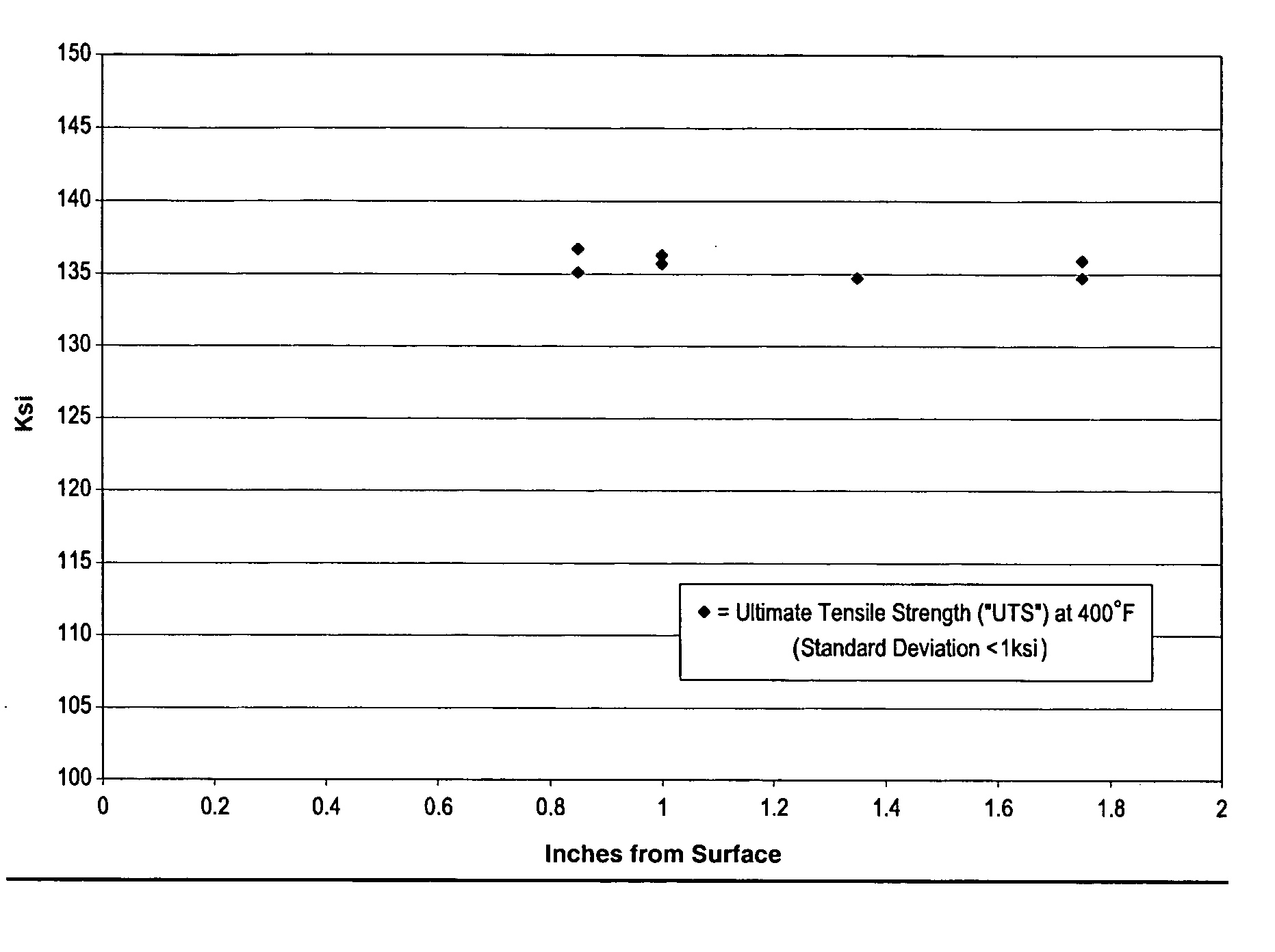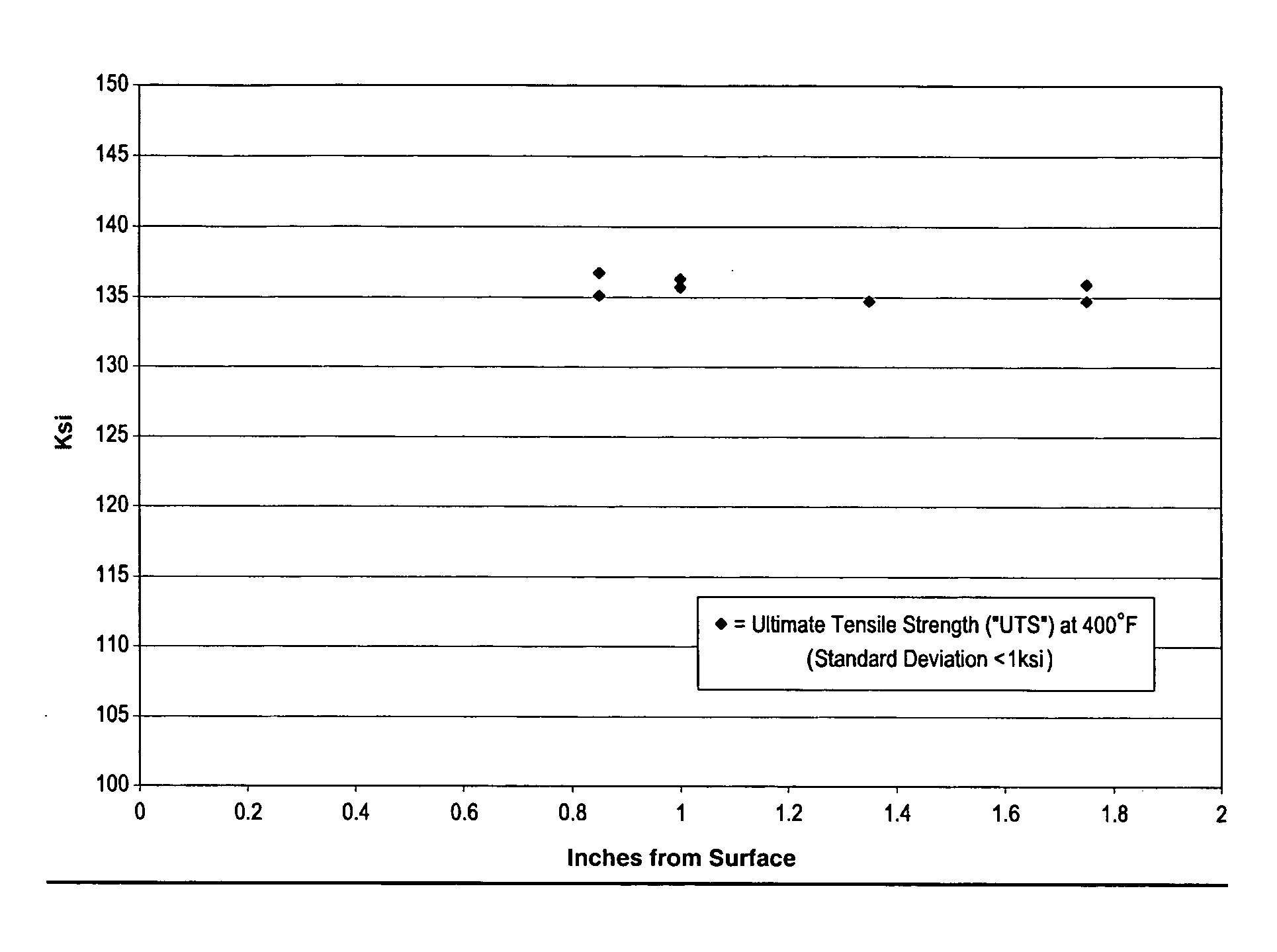Application of high strength titanium alloys in last stage turbine buckets having longer vane lengths
a technology of titanium alloys and buckets, applied in waterborne vessels, climate sustainability, machines/engines, etc., can solve the problems of affecting the service life of steam turbine buckets, and being routinely exposed to a variety of severe operating conditions
- Summary
- Abstract
- Description
- Claims
- Application Information
AI Technical Summary
Benefits of technology
Problems solved by technology
Method used
Image
Examples
Embodiment Construction
[0015] Titanium-based alloys according to the invention have the exemplary weight percentages shown below in Table I:
TABLE IAlVSnZrMoCrSiFeTi3% toUp toUp toUp to1.75%Up toUp toUp toBalance6.25%3.5%2.25%2.25%to2.25%0.7%2.3%5.0%
[0016] The titanium-based alloys used to form buckets according to the invention, i.e., alloys used for buckets having vane lengths of at least about 40 inches, exhibit a minimum ultimate tensile strength at room temperature of 145 ksi; 0.2 percent yield strength of 130 ksi at room temperature; minimum ultimate tensile strength at 400° F. of 125 ksi; and a minimum 0.2 percent yield strength of 110 ksi at 400° F. The preferred alloys display either a beta or alpha beta structure and achieve a minimum fracture toughness of about 50 ksi root square inches.
[0017] Various steam turbine buckets having vane lengths of about 40 inches were formed in accordance with the invention using the above titanium alloy composition ranges. As noted above, a number of design fa...
PUM
| Property | Measurement | Unit |
|---|---|---|
| length | aaaaa | aaaaa |
| temperature ultimate tensile strength | aaaaa | aaaaa |
| ultimate tensile strength | aaaaa | aaaaa |
Abstract
Description
Claims
Application Information
 Login to View More
Login to View More - R&D
- Intellectual Property
- Life Sciences
- Materials
- Tech Scout
- Unparalleled Data Quality
- Higher Quality Content
- 60% Fewer Hallucinations
Browse by: Latest US Patents, China's latest patents, Technical Efficacy Thesaurus, Application Domain, Technology Topic, Popular Technical Reports.
© 2025 PatSnap. All rights reserved.Legal|Privacy policy|Modern Slavery Act Transparency Statement|Sitemap|About US| Contact US: help@patsnap.com


